Investigating The Perfect Wall
There are many things an exterior wall should do. Among the most significant performance requirements is environmental separation; "it needs to keep the outside out and the inside in," according to Joseph Lstiburek, Ph.D., P.Eng. It also must be safe and structurally sound, and it has to look good. Structural engineers do a good job of keeping structures from falling down. Building codes do a good job of ensuring that buildings are safe. Architects do a good job of making buildings look good. Where we most often fail is in the environmental separation.
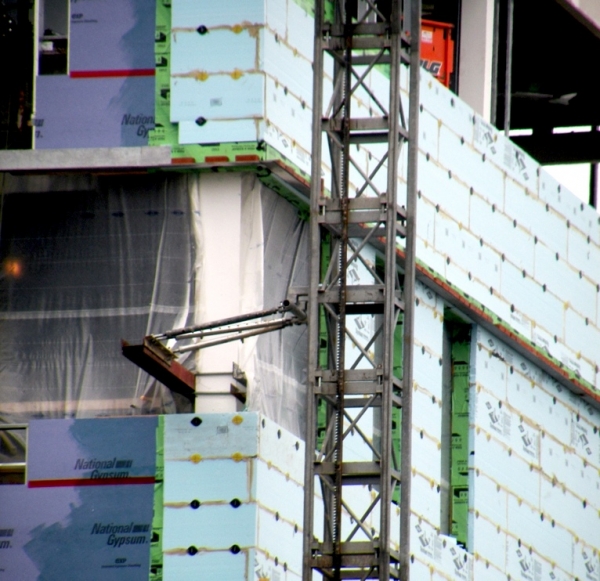
Joseph Lstiburek, Ph.D., P.Eng., is a principal of Building Science Corporation LLC and an ASHRAE Fellow. He describes "the perfect wall" as one that can do everything it should do, in almost any climate, in any season. The perfect wall is a concept that is really quite simple, but in order to achieve all the performance requirements - especially moisture control - we need to challenge the conventional wisdom about how we build.
Buildings Leak
Dr. Lstiburek says there are two kinds of buildings: those that leak and those that will leak. Controlling moisture is that one thing we just can't seem to master. Once upon a time, when energy was cheap, we built buildings that leaked, but it didn't matter. The materials we used were largely unaffected by wetting and drying. We had so much energy loss and air movement through the structure that the walls dried out quickly enough to prevent moisture damage.
Now, we make our buildings tight to conserve energy. Reducing energy consumption is a good thing, but, unfortunately, we don't do anything differently to control the moisture that inevitably occurs. Added insulation slows the thermal transfer through the wall that helps drying. At the same time, our building materials have become more sensitive to moisture. We use OSB, paper-faced drywall and other cellulosic materials that will support mold if they do not dry out quickly.
We have to build smarter. We have to stop relying on details that worked in the past and start considering thermodynamics. Dr. Lstiburek's basic principles of thermodynamics are: heat moves from warm to cold; moisture moves from warm to cold; moisture moves from more to less; air flows from high to low pressure, and gravity acts downward.
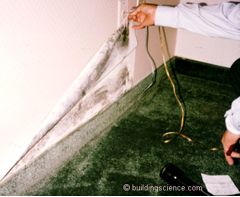
Moisture is introduced from the environment, from below the ground, and from building occupants. We need to control moisture as best we can and then deal with the moisture we can't control by allowing drying to take place. Too often, we provide multiple barriers that trap moisture in the wall, creating a perfect environment for mold. One great example of an unintended moisture barrier is vinyl wall covering.
How is a perfect wall constructed?
In order to successfully separate the outside from the inside, the building envelope must have four control layers. These are (listed in order of importance): a rain control layer, an air control layer, a vapor control layer, and a thermal control layer. The simplest thing to do is combine the rain, air and vapor barriers into a single membrane. If the control layers are outside the structure, we can protect it from the weather and extremes of temperature. The thermal control layer (insulation) should be located outside of the other control layers to minimize temperature fluctuations of the membrane. This also avoids having the structure short circuit the insulation and reduce its overall effectiveness. Insulation installed within steel framing loses from more than half to three-quarters of its R value due to thermal shorts in the assembly. If the wall is framed in wood, a portion of the total insulation can installed between studs, with the balance located outside the control layers.

Now, to complete the wall, we add an exterior cladding material which provides physical protection (including UV protection) to the control layers. The perfect wall concept does not require any particular materials; cladding could be masonry, siding, EIFS, or whatever.
The wall assembly needs to be allowed to dry both in both directions beyond the control layers. To allow drying on the outside, the cladding either needs to allow air movement through it or be installed to allow air movement behind it. To permit drying on the inside, we need to make sure we don't create a second barrier. Latex paint on gypsum board is classified as a Class III vapor retarder, and yet, it still allows the wall to breathe, permitting drying on the interior.
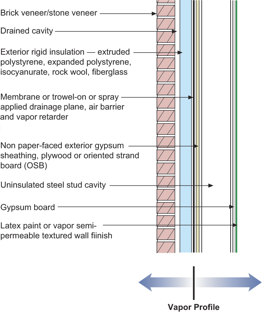
This illustration is a suggested middle-of-the-road, commercial version of the"perfect wall". An institutional version would replace the steel stud backup with concrete masonry; a residential version would use wood framing and could include insulation in the stud space.
The Perfect Roof and the Perfect Slab
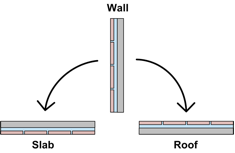
In addition to walls, a building needs a top and a bottom to complete the building enclosure. The perfect wall can be turned 90 degrees with the control layers above the structure to make a roof or turned the other way, with the structure on top, to make a slab. It is important to connect the control layers at the intersections to maintain continuity.
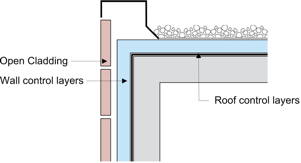
Applicability
The concept of the perfect wall will work anywhere except very cold regions (e.g., Alaska and the northern parts of Canada).
Credits
Illustrations courtesy of Building Science Corporation LLC.

Rick Howard
Rick, AIA, CSI, CCS, LEED AP, is a graduate of The Ohio State University, a registered architect, and a Certified Construction Specifier with more than 30 years experience in writing specifications for a wide range of projects, including schools, hospitals, high-rise buildings, military projects, preservation of historic landmarks, and sustainable buildings. He is active in the Columbus Chapter of the Construction Specifications Institute and has served as a member of the American Institute of Architects' MasterSpec® Architectural Review Committee since 2004.

